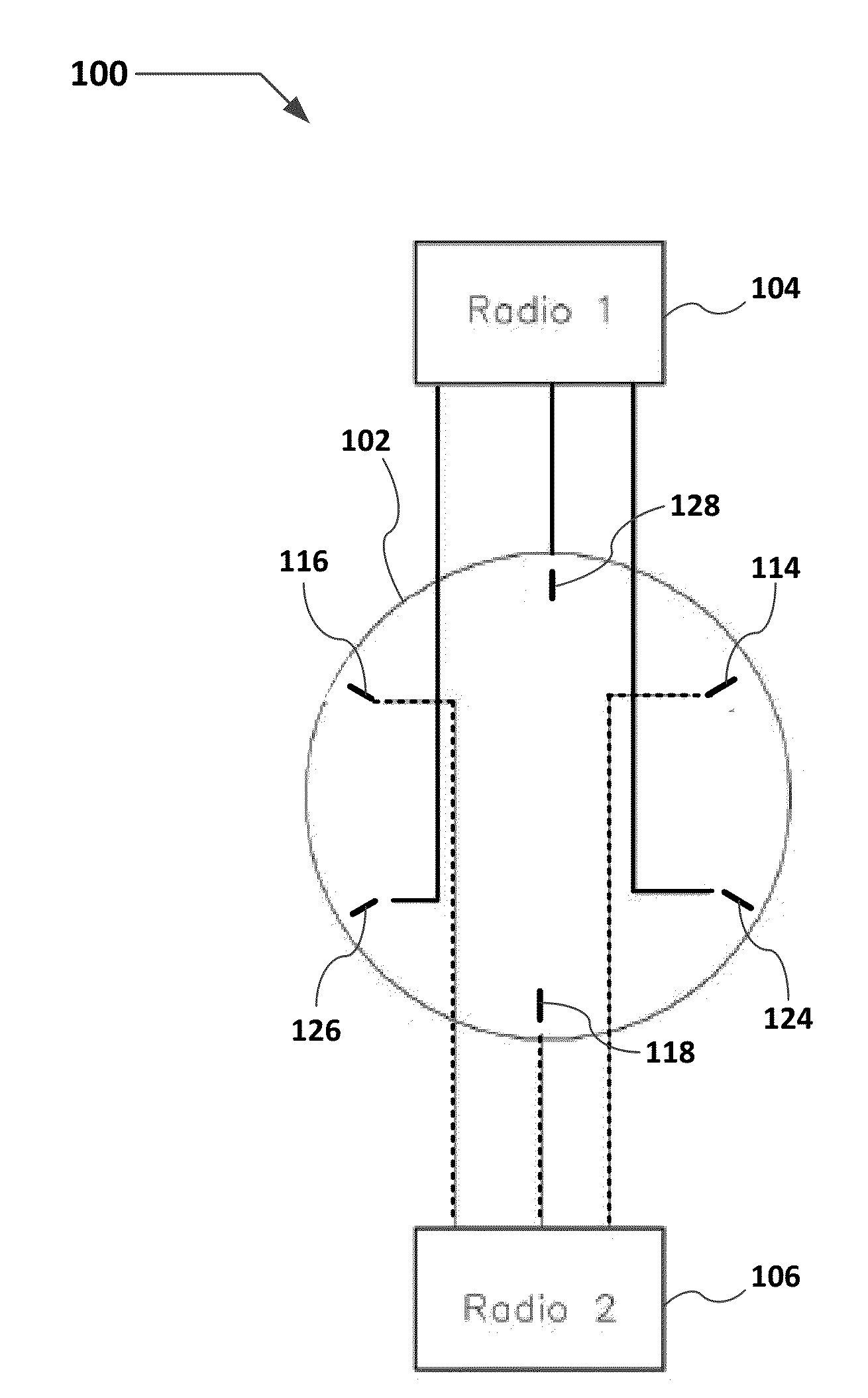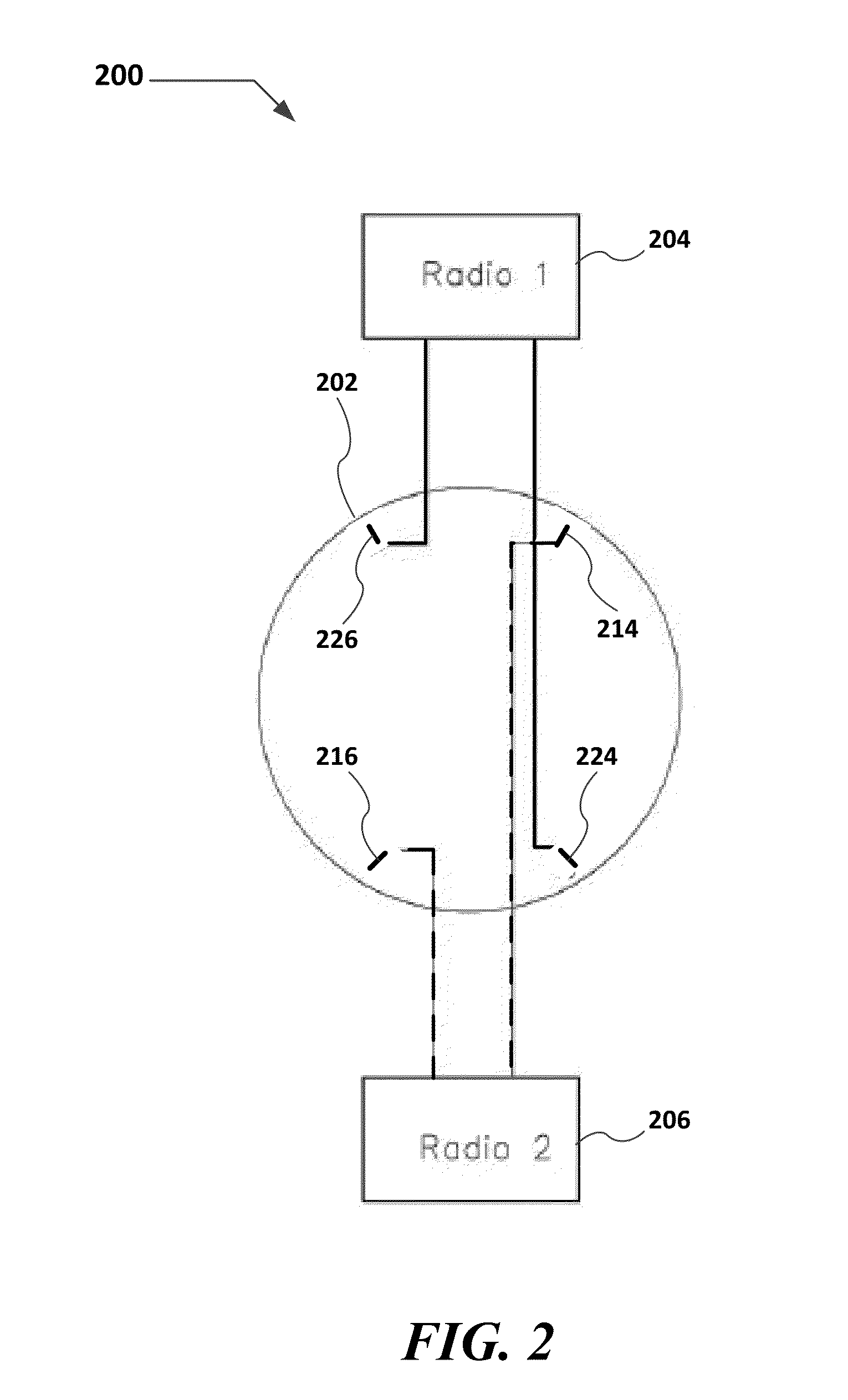Distributed Omni-Dual-Band Antenna System for a Wi-Fi Access Point
a wi-fi access point and omni-dual-band technology, applied in the field of antenna systems, can solve the problems of reducing throughput, limiting the total throughput available, and reducing throughput, so as to increase the isolation between the antennas, reduce the isolation of any antenna element in the array, and reduce the isolation
- Summary
- Abstract
- Description
- Claims
- Application Information
AI Technical Summary
Benefits of technology
Problems solved by technology
Method used
Image
Examples
Embodiment Construction
[0035]In the following description of example embodiments, reference is made to the accompanying drawings that form a part of the description, and which show, by way of illustration, specific example embodiments in which the invention may be practiced. Other embodiments may be utilized and structural changes may be made without departing from the scope of the invention.
[0036]In general, a distributed omni-dual-band antenna system for use in a Wi-Fi access point is described. The distributed omni-dual-band antenna system includes an antenna array that may include 4, 6, or 8 antennas arranged in a circular array fashion along the Wi-Fi access point. Each antenna may be associated with a different Wi-Fi radio. The antennas for the different radios are interleaved (see FIGS. 1 and 2) in order to provide omni-coverage with minimal distortion. Each antenna element in the array may be dual-band one may also be semi-directional.
[0037]FIGS. 1 and 2 show schematic views of a two radio archite...
PUM
 Login to View More
Login to View More Abstract
Description
Claims
Application Information
 Login to View More
Login to View More - R&D
- Intellectual Property
- Life Sciences
- Materials
- Tech Scout
- Unparalleled Data Quality
- Higher Quality Content
- 60% Fewer Hallucinations
Browse by: Latest US Patents, China's latest patents, Technical Efficacy Thesaurus, Application Domain, Technology Topic, Popular Technical Reports.
© 2025 PatSnap. All rights reserved.Legal|Privacy policy|Modern Slavery Act Transparency Statement|Sitemap|About US| Contact US: help@patsnap.com



